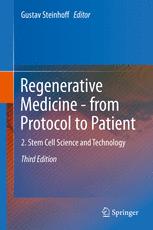

Most ebook files are in PDF format, so you can easily read them using various software such as Foxit Reader or directly on the Google Chrome browser.
Some ebook files are released by publishers in other formats such as .awz, .mobi, .epub, .fb2, etc. You may need to install specific software to read these formats on mobile/PC, such as Calibre.
Please read the tutorial at this link: https://ebookbell.com/faq
We offer FREE conversion to the popular formats you request; however, this may take some time. Therefore, right after payment, please email us, and we will try to provide the service as quickly as possible.
For some exceptional file formats or broken links (if any), please refrain from opening any disputes. Instead, email us first, and we will try to assist within a maximum of 6 hours.
EbookBell Team

4.8
64 reviewsRegenerative medicine is the main field of groundbreaking medical development and therapy using knowledge from developmental and stem cell biology, as well as advanced molecular and cellular techniques. This collection of volumes on Regenerative Medicine: From Protocol to Patient, aims to explain the scientific knowledge and emerging technology as well as the clinical application in different organ systems and diseases. International leading experts from all over the world describe the latest scientific and clinical knowledge of the field of regenerative medicine. The process of translating science of laboratory protocols into therapies is explained in sections on regulatory, ethical and industrial issues. This collection is organized into five volumes: (1) Biology of Tissue Regeneration, (2) Stem Cell Science and Technology, (3) Tissue Engineering, Biomaterials and Nanotechnology, (4) Regenerative Therapies I, and (5) Regenerative Therapies II. The textbook gives the student, the researcher, the health care professional, the physician and the patient a complete survey on the current scientific basis, therapeutical protocols, clinical translation and practiced therapies in regenerative medicine.
Volume 2 contains sixteen chapters addressing advanced knowledge on “Stem Cell Science and Technology” addressing basic classification technology, cell biology of stemness state and regulatory molecular pathways. Mechanisms and technology of cell programming are explained, as well as the pathology of cancer cells and dedifferentiation signalling. Pluripotent, multipotent germline and tissue specific human stem cells are classified and qualified according to their respective biological function or tissue regeneration. Leading stem cell scientists from all over the world explain advanced technology, latest knowledge, and clinical implications of human stem cell science in a unique, comprehensive and detailed outline.